I created a logistic/logit model with a binomial response variable using
model <- glm(response~predictor1+predictor2+...)
and then I used the predict function to create a new data frame
outcome <-data.frame(predict(model,newdata=IndependentDataSet,type="response"),as.numeric(as.character(Independent$ResponseVariable)))
names(outcome) <- c("Pr","Obs")
I can use one of the following functions
plot(verify(data$obs,data$pr),CI=TRUE)
attribute(verify(data$obs,data$pr))
to create a plot that looks like this

or
reliability.plot(verify(data$obs,data$pr))
from
library(verification)
to create a reliability diagram. I am wondering how I can separate the bins based on specific values. For example, the model that I am evaluating is based around a climatology of 19% (0.19) and I want there to be a bin at (1/3)*climatology, climatology, and go up by (2/3) of climatology for the proceeding bins. How can I do this?
Additionally, I have seen the bins represented as circles that are proportional in size to the percent of the data that is at that bin. Does anyone know how to make a more aesthetically pleasing reliability diagram in R? Any recommendations are welcome.
This is how I would like my diagrams to appear
